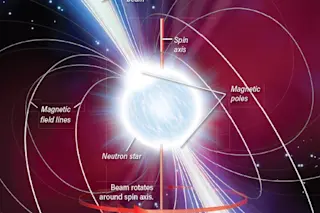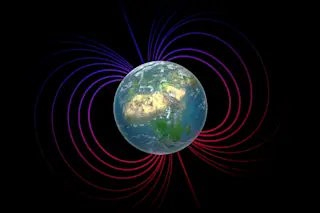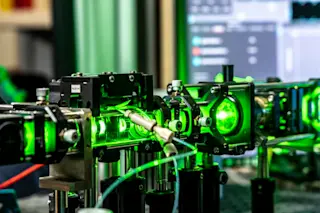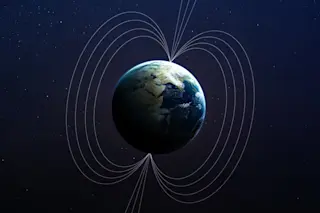The universe is full of weird objects, but pulsars take the prize as the strangest things scientists can study directly. The shriveled remains of once-mighty stars, they’re around a dozen miles across, have approximately the mass of a sun and can spin hundreds of times per second. They’re also made of a poorly understood particle soup for which researchers don’t have the recipe.
Here’s what we do know: Pulsars are a type of neutron star, the dense core left over after a supernova — a stellar explosion. Astronomers can see pulsars only because electromagnetic radiation, especially radio waves, streams from their magnetic poles. As the pulsars spin, these streams point, once per go-around, at Earth. They sweep over our planet like transient lighthouse beams, and telescopes pick up each one as a pulse.
As part of her doctoral work in radio astronomy, Jocelyn Bell Burnell built a radio telescope by ...















